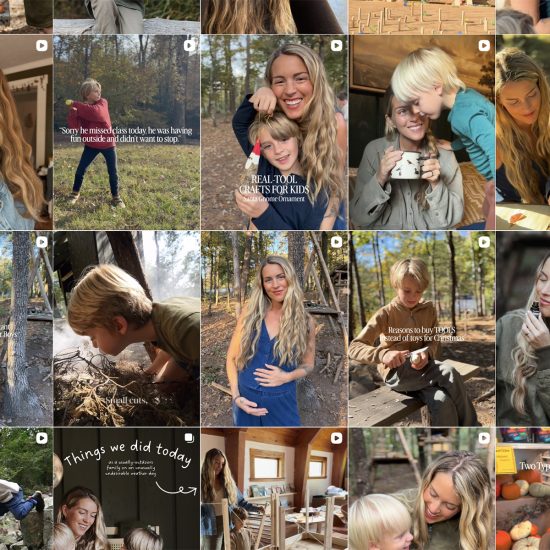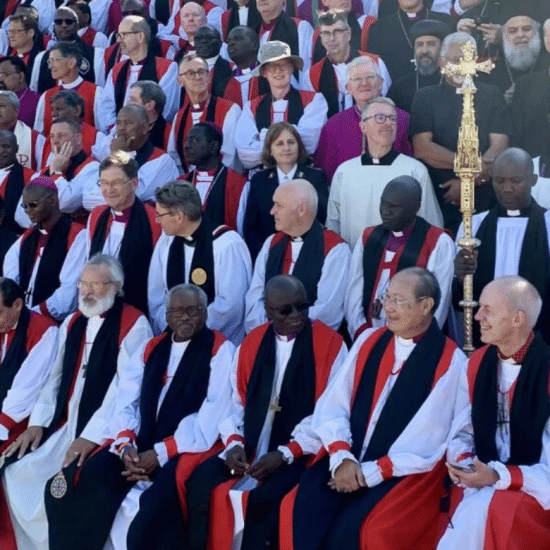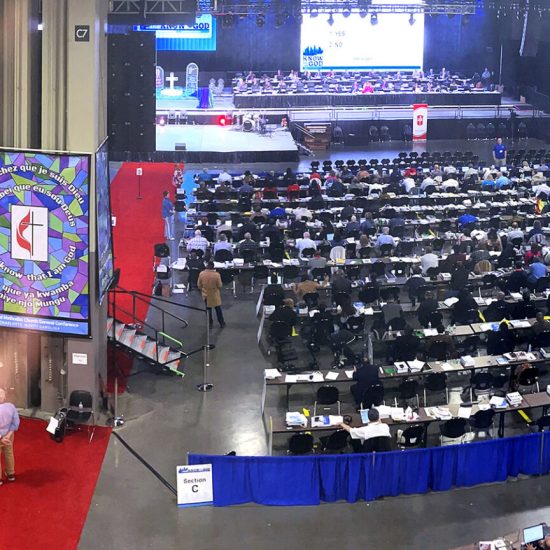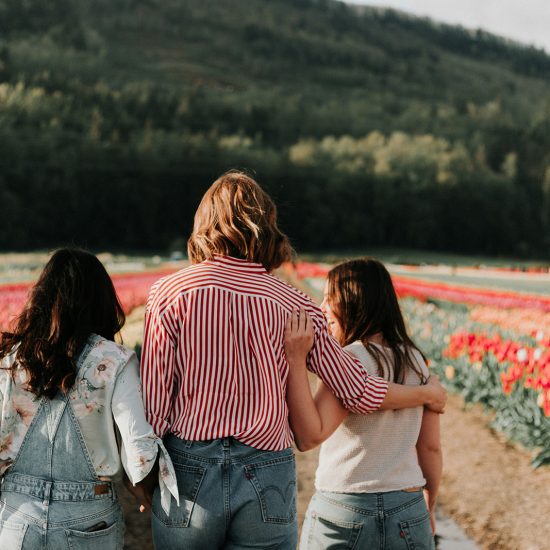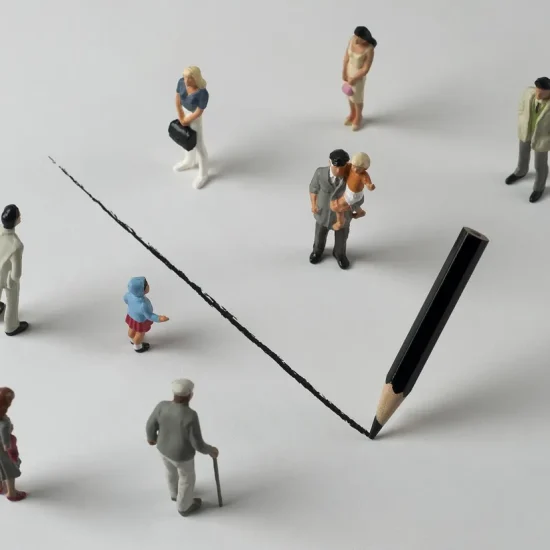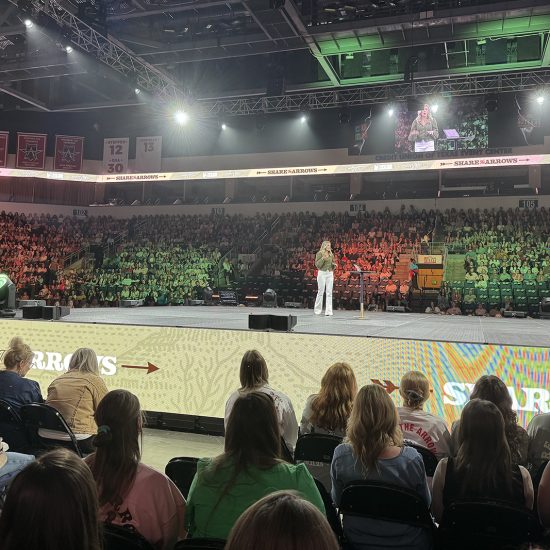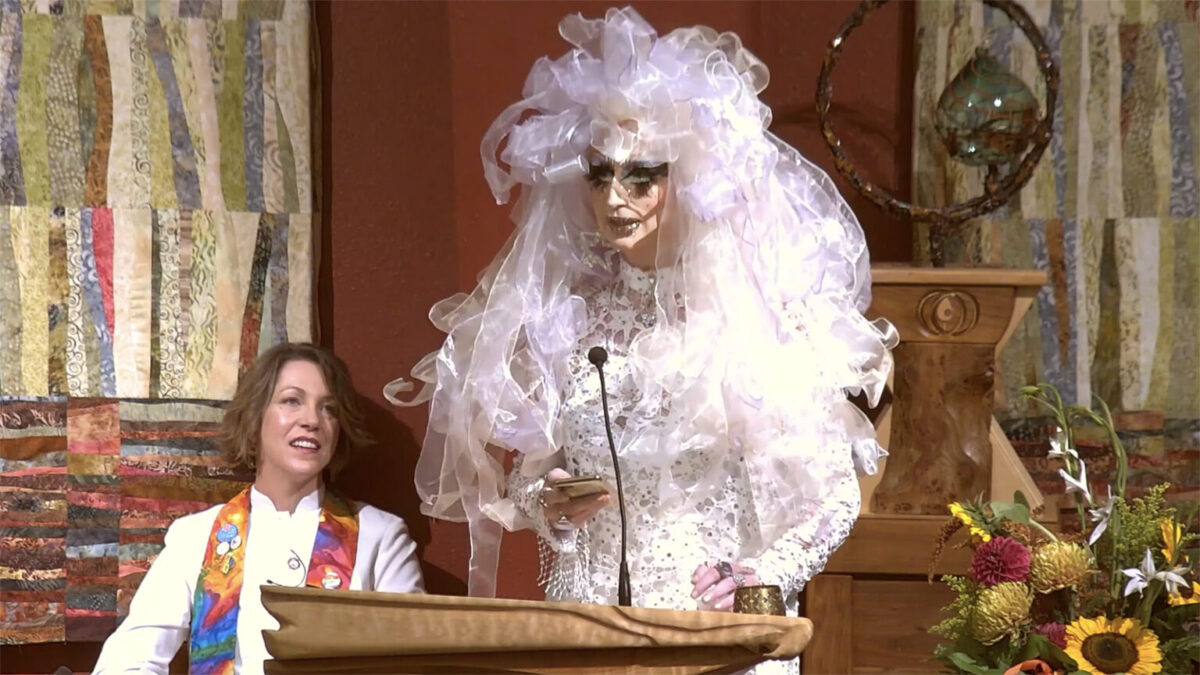
(RNS) — Clad in heels, lace, and a billowy white hairpiece, the guest preacher at Boise Unitarian Universalist Fellowship in Idaho approached the pulpit last August with markedly more sparkle than the usual cleric.
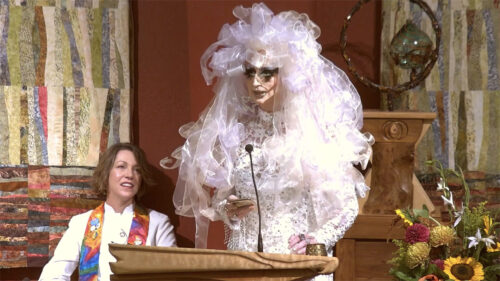
Bonnie Violet Quintana delivers a sermon at the Boise Unitarian Universalist Fellowship in Boise, Idaho, in August 2023. (Video screen grab)
Bonnie Violet Quintana, a drag artist and queer chaplain, had been invited to organize a drag-centric service, and chose to conclude the liturgy — which had featured a drag queen singing songs from “Mister Rogers’ Neighborhood,” testimony from a drag king who survived cancer and a drag performance to Florence and the Machine’s “Big God” — with a sermon about sanctuary.
“I think there is a push happening,” Quintana, who hosts the “Drag & Spirituality” podcast, told Religion News Service. “I think there are a lot more people who are willing, and a lot more spiritual spaces and spiritual communities better suited to create space for drag artists.”
Once relegated exclusively to gay bars and nightclubs, drag is increasingly in the open these days — at libraries, music festivals, and, yes, churches. Drag artists are partnering with queer-affirming faith communities to integrate drag performances and worship experiences. Sometimes, these efforts are a response to political initiatives to criminalize drag performance and gender-affirming care for minors.
“We are scrappy activist outsiders slowly building the movement as resources allow,” said John Brett, programs director for San Francisco Night Ministry.
A historically queer-centric organization, the San Francisco Night Ministry, which provides spiritual support to those on the city’s streets at night, hosts an annual worship service called Drag Church intended to claim public space for queer faith.

Participants in the San Francisco Night Ministry annual Drag Church event pose together in The Castro neighborhood of San Francisco. (Photo by Sam LaDue)
Each year since 2021, participants gather at the heart of The Castro, the city’s historically LGBTQ neighborhood, and engage in a liturgy led by drag artists. There are readings from texts such as “The Faggots and Their Friends Between Revolutions,” songs, and a Eucharist, usually in the form of rainbow-colored muffins and grape juice. The event concludes with an invitation to walk a runway adorned with a disco ball.
“It’s the queer altar call. And what better way to end drag church but with a dance party?” said Brett, who said drag church is about “affirming the blessedness of creation over and against anything any of our traditions have told us.”
Brett isn’t the only one bringing drag to church. Flamy Grant, a drag queen who topped iTunes’ Christian music charts and whose next album, “Church,” is due out in September, told RNS she’s been to 40 churches in the last year. The invitations have come from across the U.S. and from a range of LGBTQ- affirming denominations, including Baptists, Presbyterians, Methodists, and Lutherans.
After working in churches for over two decades, Grant is no longer interested in leading worship. But she’s happy to tell stories and sing family-friendly versions of her original songs, which grapple with topics such as faith and identity. She noted that drag isn’t inherently sexual or explicit: At its essence, she said, drag is a performance art that includes an exploration of gender, and it can be molded to suit a particular audience. Still, some audiences are more open than others.
“My experience with it has largely been in spaces where it is a brand-new thing for these congregations,” said Grant about the church invitations she’s received. “That has created varying levels of tension and friction.”
Earlier this month, Grant was invited to sing at St. Andrew Presbyterian Church in Iowa City, Iowa. Jeff Charis-Carlson, director of communications for the church, proposed hosting Grant as part of the church’s efforts to be “open and affirming.” Though some church members were apprehensive, the church board agreed to host Grant for a 90-minute set that attracted more than 200 people.
“Was it worship? Absolutely,” said Charis-Carlson. “A good worship service transforms the congregation in the way a Greek tragedy was supposed to transform the audience members. … Drag is just one expression of that, one that has been in the theaters for a long time, and it’s now making its way into churches.”
Days earlier, Grant performed in the sanctuary of Pilgrim Congregational Church, a United Church of Christ congregation in Oak Park, Illinois, as part of the church’s 150-year anniversary celebration. David Loofbourrow, a lay leader who coordinated the event, called Grant’s performance a “milestone” for the church that served as a confirmation of its efforts to become unequivocally welcoming to all LGBTQ folks.

Artist Flamy Grant, right, performs with a violinist at Pilgrim Congregational Church, Saturday, June 1, 2024, in Oak Park, Illinois. (Photo © Georgia Roulo)
“For me, it’s still entirely about the fact that there are queer kids coming up in those spaces, and those kids deserve to see themselves represented,” said Grant about her decision to perform in churches. She added that while not all queer kids will connect with drag, many LGBTQ folks experience the performance art as affirming, especially those outside the gender binary.
“I want them to feel that they belong to their spiritual family, and not feel as though they are some kind of exception, that some special dispensation of grace was needed because of their queerness,” she said.
Beyond the liturgical formats of Christian worship services, drag and worship are also being fused together in grassroots events such as the Drag & Spirituality Summit. Launched in 2022 and often hosted by faith groups, the summit is an interfaith event that each year draws more than 60 faith leaders and drag performers who attend panels such as “Drag as Spiritual Healing” or “Spiritual Care for Drag Artists.” In the evenings, drag artists perform something of spiritual significance to them. For some, that’s telling stories about religious transformation; for others, it’s lip-synching to a Beyonce song.
“I don’t think we have a lot of opportunities for drag to exist in intentionally spiritual space,” said Quintana, who is the director and creator of the summit. “And so it’s about the drag artists, helping them have an opportunity to become more integrated, to share and witness other people’s experience and expression. It’s also for spiritual leaders and providers to be able to learn from us.”
Drag Revival in Louisville, Kentucky, is another new event that features drag performances with spiritual themes, but for a wider audience. It emerged in 2022 after two Baptist pastors attended a one-woman show by drag artist May O’Nays at a local gay bar and wanted to introduce the show, which featured raw reflections on the impact of theologically conservative Christianity, to more people.
That quest led to a 300-person Drag Revival featuring May O’Nays’ show as well as testimonies and performances from other queer folks and drag artists. For three years running, the family-friendly Drag Revival, which is sponsored by queer-affirming churches in the area, has sold out.
O’Nays told RNS that in at least one case, discussions over whether to sponsor the Drag Revival have led a local church to become LGBTQ affirming.
“It’s my hope that our Louisville drag revival is a place where people, specifically queer people, but anybody can come and have an outlet to ponder or express or sit in their relationship with the divine, as broadly as that looks,” she said.
Like the Drag & Spirituality Summit, Louisville’s Drag Revival is intended to welcome people of all and no faiths. While Christianity is often the implied religious context of many drag/spirituality events, drag artists are increasingly making inroads in other faith spaces, too. Since 2020, Keisuke Lee-Miyaki, a gay Buddhist minister from Japan living in San Francisco, has often integrated drag performance during Pride Month while leading chants at his temple.
“It about uniting together with community. I want to introduce LGBTQ people who have a difficult time belonging to that experience of welcome and melding together spiritually,” he told RNS. He added that the practice is also reflective of the Amitābha Buddha, a deity who transcends gender binaries and is a symbol of acceptance.
For those ushering drag into worship contexts, they see the integration of drag performance and spirituality as a theological exercise about speaking truth to power, centering the disenfranchised, and expanding conceptions of the divine. And while some faith communities have a long history of inviting drag queens to church, these days, those invitations are advertised.
“The queer community now feels resourced in such a way where we can do it with a touch more grandeur, and without any longer lowering our voices,” said Brett. “We can live out loud.”

